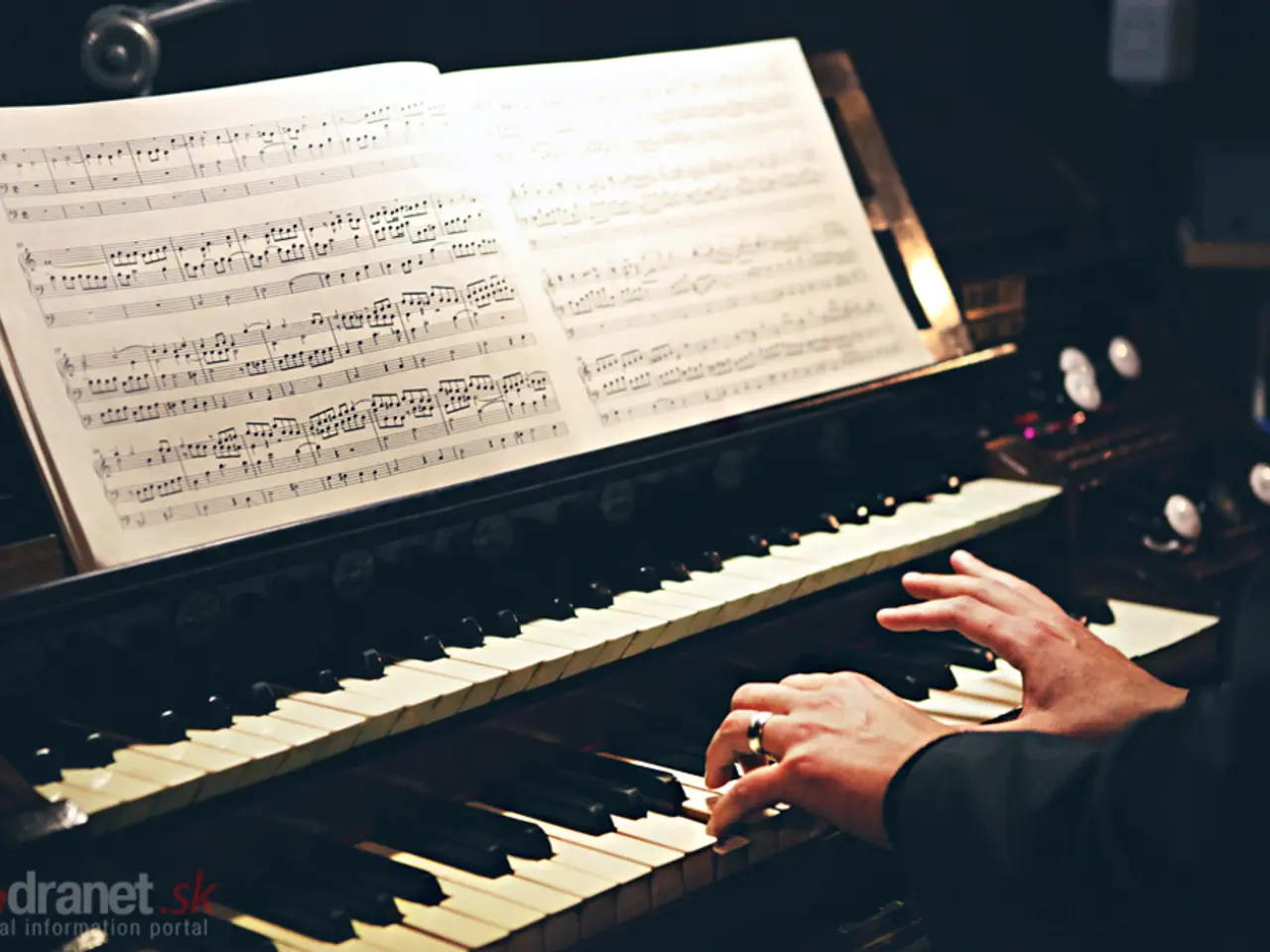Strategies for honing sight-reading skills and technique mastery
Improving your ability to sight read piano music can be a challenging yet rewarding endeavour. Here are some key strategies to help you effectively practice and master this skill.
Firstly, it's essential to scan the music before playing to understand the key signature, time signature, rhythms, and any tricky spots. This initial scanning will provide a foundation for your performance.
Secondly, maintaining a steady beat while playing is crucial to keep the rhythm flow, even if mistakes occur. This will help you regain your footing and continue with confidence.
Thirdly, practice daily in short sessions rather than infrequent long sessions. Consistent, regular practice will help build consistency and reduce pressure.
Starting slow and gradually increasing tempo is another effective approach. As your confidence improves, you can begin to increase the tempo.
To make practice more engaging, consider using resources like Sight Reading Studio. These tools can generate customised exercises, provide feedback, and boost motivation and progress.
Another strategy is to practice with an ensemble or accompaniment. This will help develop timing and independence, essential skills for performing with others.
In sight reading, it's important to focus on reading ahead and recognising patterns such as scales, intervals, and chord shapes rather than reading note-by-note. This will help you anticipate what's coming and play with a smoother, more fluid rhythm.
Beginner tips include mastering subdivision (e.g., counting 8th notes correctly) and understanding upbeats/downbeats to maintain a steady rhythm. Live lessons and tutorials often emphasise the "three golden rules" of sight reading: look ahead, keep going, and don't stop for mistakes.
Learning to read piano music involves breaking it down into sections, phrases, and notes. Additionally, sound and dynamics, including phrasing, tone, articulation, pedalling, or vibrato, are important aspects to consider when learning to play piano.
Sight reading music requires quick interpretation and understanding of the score. Practicing sight reading can add new ideas and discover new things about a piece of music known for years.
In piano sight reading, it's important to check the key signature before starting. For pianists, wrist technique relies on knowing the rhythm first.
Lastly, it's important to remember that sight reading music is done under limited time, often half a minute. We can't expect to have accurate rhythm unless we know what we are doing with the notes first.
In summary, effective sight reading practice requires structured, daily, focused exercises with attention to rhythm, scanning ahead, varied materials, and gradual tempo increase, ideally supported by technology or group practice when possible. With dedication and consistent practice, sight reading can become a valuable asset in your piano repertoire.
- Beginner pianists might want to focus on mastering subdivision and understanding upbeats/downbeats to maintain a steady rhythm during sight reading.
- Practicing with an ensemble or accompaniment can help beginner sight readers develop timing and independence, essential skills for performing with others.
- To make sight reading practice more engaging, consider using tools like Sight Reading Studio which can generate customised exercises, provide feedback, and boost motivation and progress.







